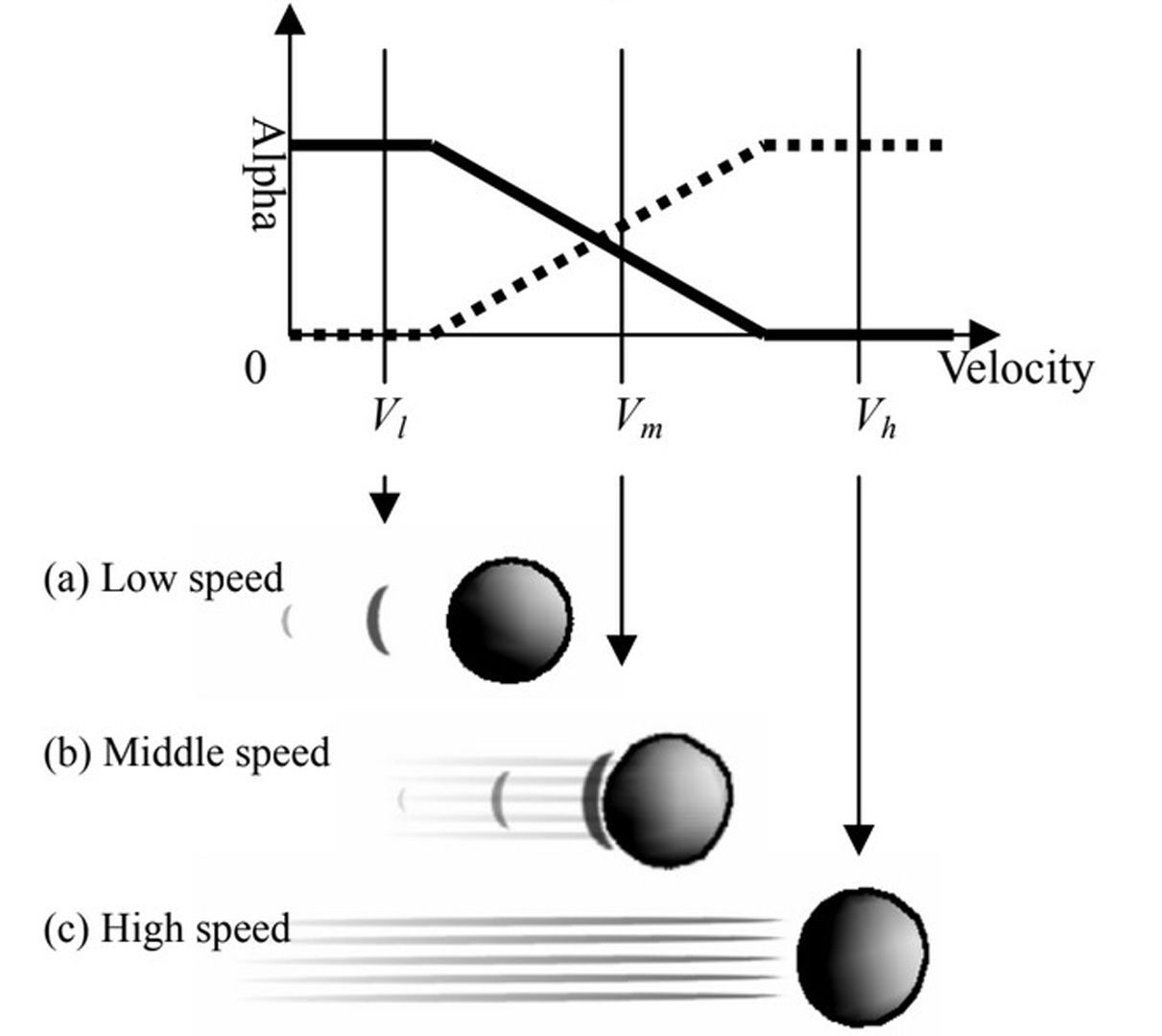“Non-photorealistic rendering technique for depicting 3D objects motion” by Moriya, Takahashi and Tanaka
Conference:
Type(s):
Title:
- Non-photorealistic rendering technique for depicting 3D objects motion
Presenter(s)/Author(s):
Abstract:
A still image extracted from a 3D animation sequence does not contain any information about the motions of 3D objects. In order to represent fast-moving 3D objects in a still image, the motion blur technique has been used. However, it cannot easily depict other kinds of motions. Several non-photorealistic rendering approaches [1] [2] have been proposed to depict the motions of 3D objects using “speed lines”. Speed lines, introduced by Masuch [1], are defined and drawn as difference vectors between the current and previous position vectors of the vertices of 3D object contours on a projected screen plane. Kawagishi et al. [2] generated very thin polygons instead of difference vectors. However, it is a tedious task to describe speed line types suitable for motion speed manually and repeatedly. We are studying a new non-photorealistic rendering technique that can depict various kinds of motions of 3D objects in animation scenes automatically and in real time. First, a motion is divided into a translation of and a rotation around the object’s center of gravity. For translation motion, we obtain the difference vectors of only the object’s center of gravity instead of those of the vertices of the 3D object’s contours. Texture-mapped polygons are generated as speed lines. Experimental results verify that our technique is effective and efficient enough to depict various motions of 3D objects automatically in real time.
References:
1. Maic. Masuch. Speedlines: Depicting Motion in Motionless Pictures. SIGGRAPH 99 Sketches & Applications, p.277.
2. Yuya Kawagishi, et al. Cartoon Blur: Non-photorealistic Motion Blur. CG International 2003, pp.276–281.





